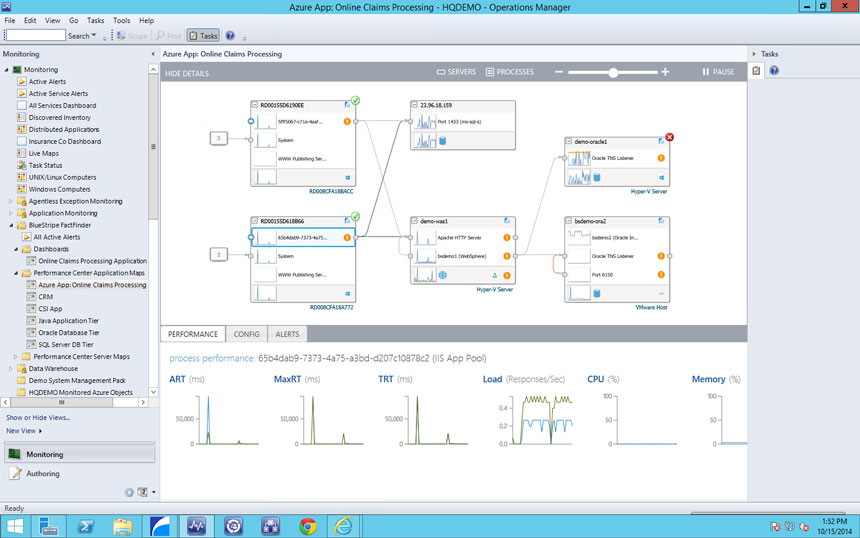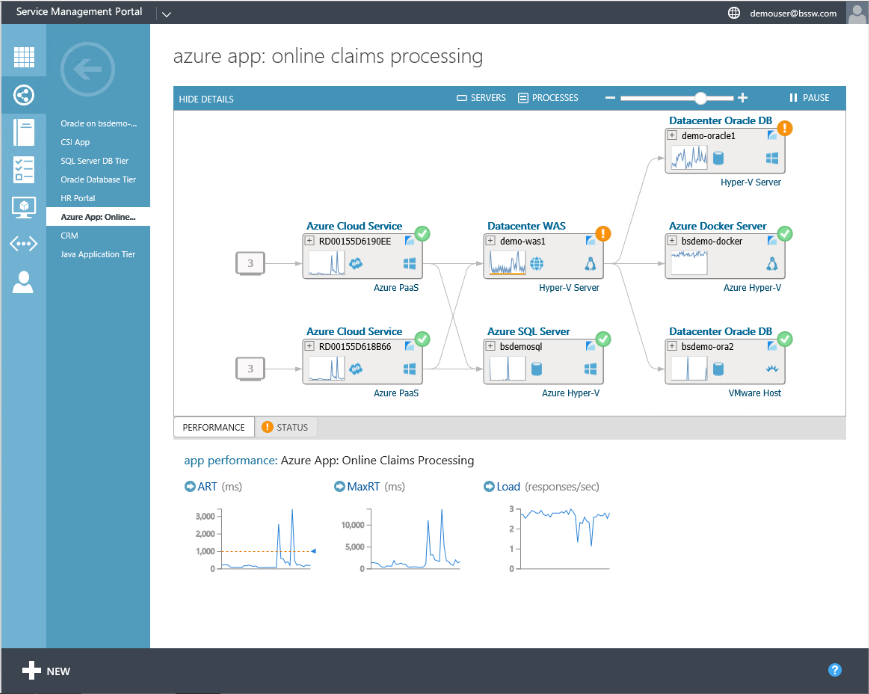Today, Microsoft announced its acquisition of BlueStripe Software. As an active board member of the company, I couldn’t be more pleased with the combination (although I will really miss working with the BlueStripe team).
BlueStripe has the mission to help IT operations teams map, monitor, and fix their distributed applications.
BlueStripe’s software, FactFinder, is a type of Application Performance Management (APM) product that is very unique, and very powerful. (The use of the APM label for BlueStripe is admittedly sloppy — it’s technically, per Gartner, Application-Aware Infrastructure Performance Monitoring, or AA-IPM. Nevertheless, the label “APM” sticks and even I can’t stop using it.)
Classic APM solutions help developers and IT managers spot and resolve problems with applications. Typically, this is done in the form of some code that is inserted into an app (kind of like a “barium trace”). This is what a company like New Relic does.
The problem with the code-centric solution is that it’s great for developers to debug their apps, but it doesn’t help IT or DevOps folks. So, the typical solution to an application problem is for enterprises to hold large “bridge” calls, where IT, DevOps, and app developers all get on long and often painful conference calls to determine where the fault lies.
FactFinder doesn’t rely on any code, and is a different type of APM. Instead of code, it relies on lightweight and intelligent agents (called “collectors”) directly installed on servers and desktop systems to monitor a broad set of applications. These agents then feed up into a map of all major applications, allowing an IT executive to immediately spot (and dig down to) where the problems are.
For example, let’s imagine an application in banking. When a person inserts their ATM card, a series of actions occur behind the simple ATM transaction, often involving a series of applications residing on various servers. And, let’s say that ATM transactions typically take under 30 seconds, but suddenly, start taking over 2 minutes. Something is wrong. It could be a failed connection, a configuration issue, bad code, DNS issues, rogue applications, mis-matched bandwidth, memory or storage — whatever. With FactFinder, the IT executive gets an immediate alert, and can visually determine where the problem is, dig down and fix it.
It’s wickedly cool stuff.
FactFinder can monitor pretty much anything. Windows, Linux, Solaris, and AIX servers, and even using containers like Docker. It can even monitor response times from other servers (mainframes, 3rd party services) that are part of an application. And, it monitors both packaged applications (SAP, PeopleSoft, Exchange, etc.) and custom-built applications.
Environments are becoming insanely complex
The problem of managing complex application environments is even more difficult because of two trends: virtualization (massively multiplying the number of servers and the complexity of the environment) and the move to the cloud.
It’s not unusual for a server to have 12, 20, 50 virtual machines — on one server. And the cloud… well, it’s not “the cloud”, it’s almost always hybrid deployments in enterprises. So you have a multiplication of complexity, because you have apps and data residing on the private cloud, and apps and data on the public cloud. You get the picture. Sucks to be an IT ops person.
And this is where FactFinder becomes intensely interesting. Because it can monitor the apps in these complex environments.
Which brings me to…
Where Microsoft fits in.
In my opinion, BlueStripe is a perfect fit for Microsoft. In fact, I can’t think of a fit more perfect.
To explain, Microsoft’s centerpiece in its systems management strategy is Systems Center Operations Manager (SCOM). SCOM provides IT managers with a total view of network operations.
FactFinder provides many advantages to SCOM environments, by discovering, managing and measuring application and platform dependencies.
IT managers can have FactFinder automatically build topology diagrams (not possible now in SCOM), map a dynamic application architecture, monitor dependencies and provide full coverage of dependency failures (you can see a 30 second demo at TechEd by Nick Burling to get a quick idea of how it integrates).
Simply stated, it “turns the light on” for IT, development and DevOps as to what is happening to with applications on their network.

In addition, BlueStripe Performance Center for Windows Azure Pack adds application management – and a single view for managing application service delivery, all tied directly into the Windows Azure Pack service management workflow.

Oh, that’s cool.
Well done, BlueStripe team (and the competent banking group over at Pac Crest).
And to Microsoft: You got a good one here.

One reply on “With BlueStripe acquisition, Microsoft gives IT managers a new window on their world”
[…] board member and turnaround engineer, including being a board member of BlueStripe Software (acquired by Microsoft); a board member of StopBadware;a board member of Knowbe4; a board member of MalwareBytes; and […]